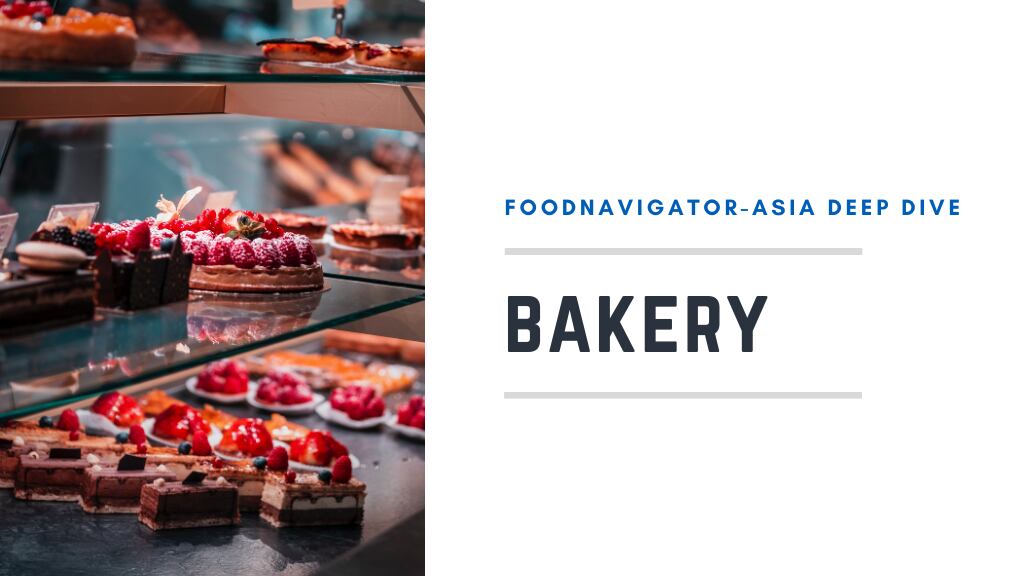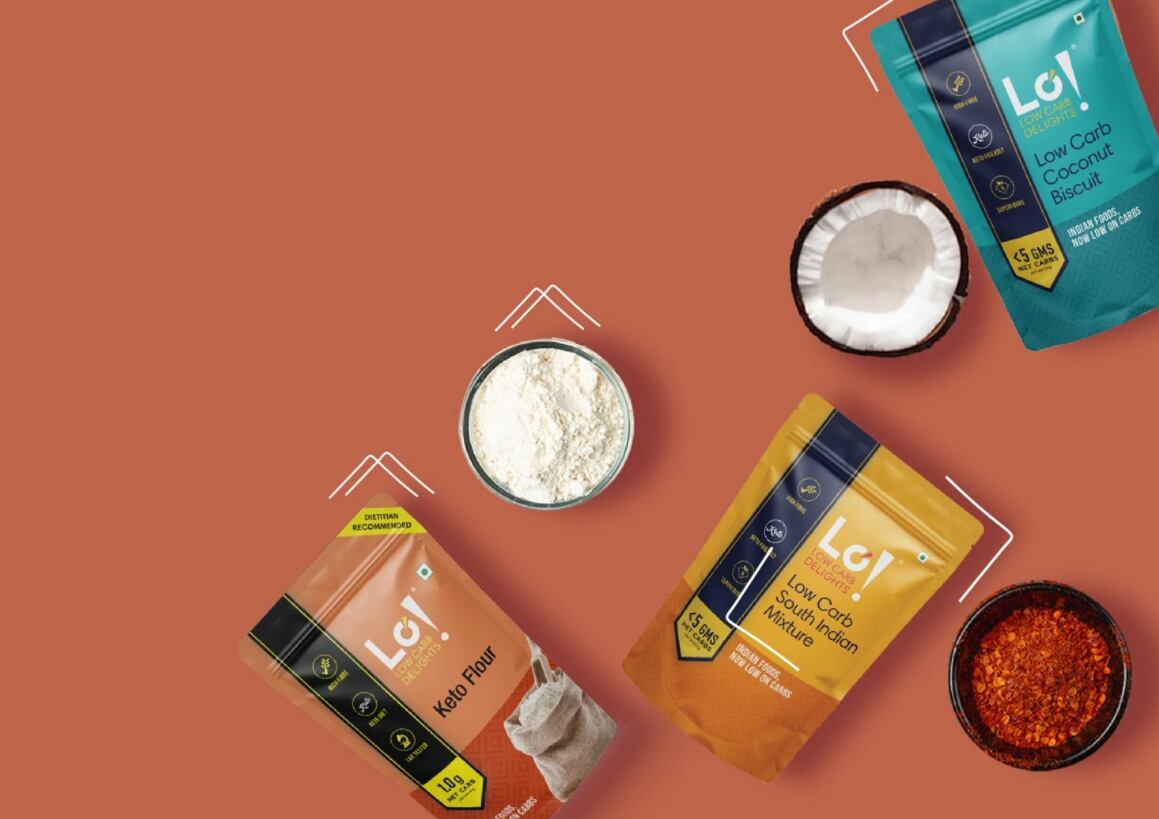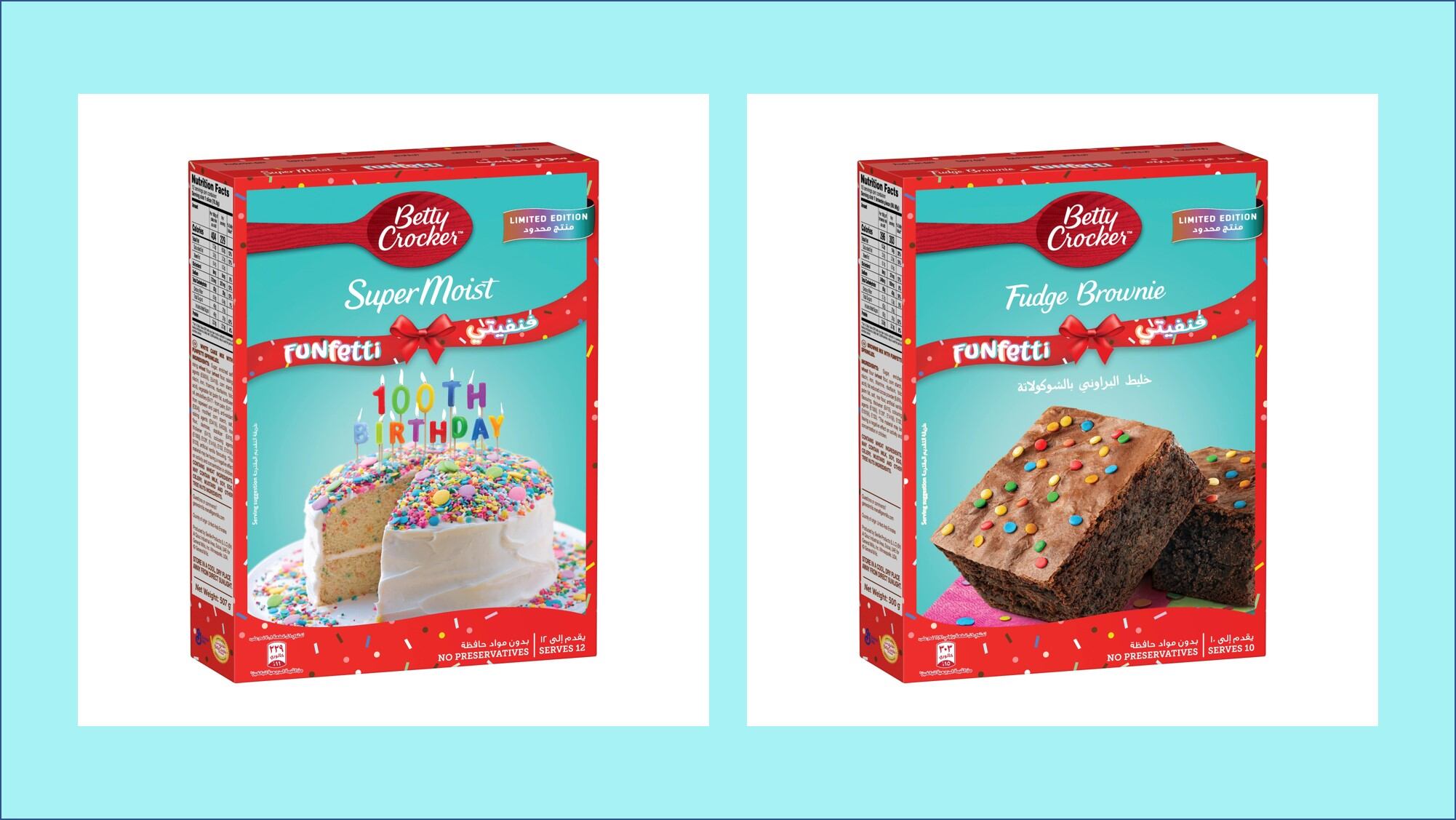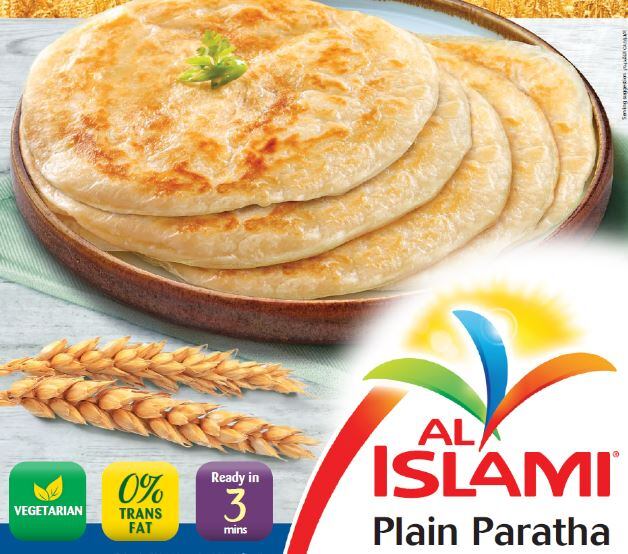In this episode of the FNA Deep Dive, we take a closer look at the bakery sector in APAC and find out more about the trends driving the industry post-COVID-19, with input from various leading firms in the industry.
Experts have predicted that the global bakery products market will grow some 2.5% from US$507.38bn in 2020 to hit US$574.05bn by 2026. Western regions such as Europe and the United States are still expected to dominate the global market, given the fact that bakery is even more of a staple across all dining occasions there as opposed to in APAC where rice is still the main staple.
That said, according to firms in the APAC region, the growth in the local bakery sector has been significant throughout the COVID-19 pandemic, and current trends are expected to boost this even further.
According to ready-to-bake product mixes specialty firm Betty Crocker, owned and operated by F&B giant General Mills, home-baking and in-home consumption is one of the most major trends in the region that has driven the bakery sector upwards during the recent lockdowns.
“With lockdowns and limited mobility, in-home consumption has grown significantly, and with consumers also working from home, they are taking more time to prepare meals for their families and learn new skills,” General Mills Head of Marketing, South East Asia Kaajal Shivdasani told FoodNavigator-Asia.
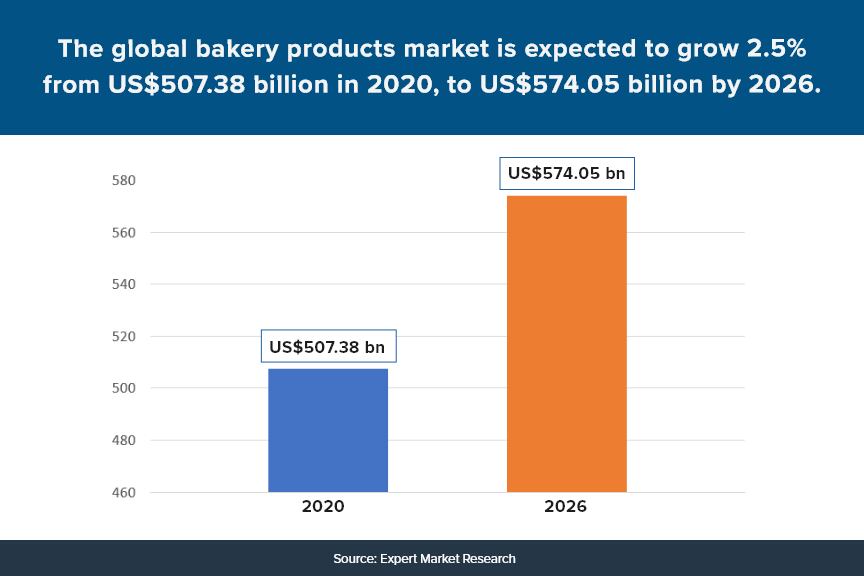
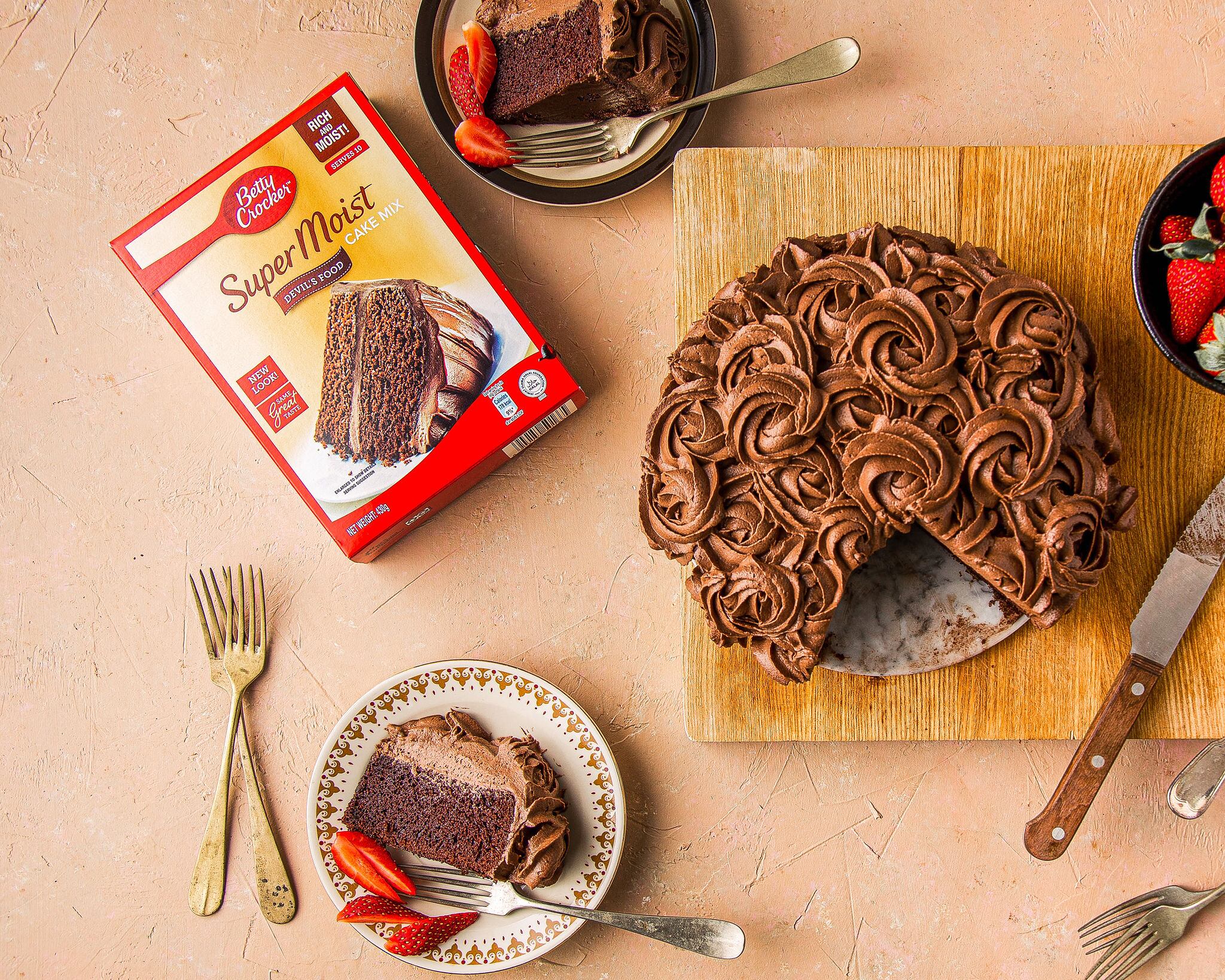
“When people were locked up in their homes they needed something to bring them happiness and joy. This saw a global resurgence in baking during the lockdown with Betty Crocker having the best year ever.
“Baking and preparing easy restaurant-style meals like pancakes [at home] has become a way for parents to find new and fun ways to engage their kids, and also to treat themselves and their families.”
The broad Betty Crocker range in APAC comprises of pancake mixes, snackables (e.g. brownies, cookies and muffins) and a variety of cakes primarily targeting the enablement of consumers to home-bake for breakfast and snacking/teatime consumption occasions.
“Pancakes, with their versatility and use in the everyday breakfast occasions, are our best-selling products in APAC, followed by brownies and cookies, which make for great everyday treats, and cakes [to] celebrate special occasions,” said Shivdasni.
“[We know that today] our consumers are busier than ever and [thus are] responding with snackable dessert innovations such as Mug Treats, Peanut butter Cookie and Brownies and RTE innovations such as Pound Cake and Soft Baked Cookies that deliver on both the hedonics and convenience.
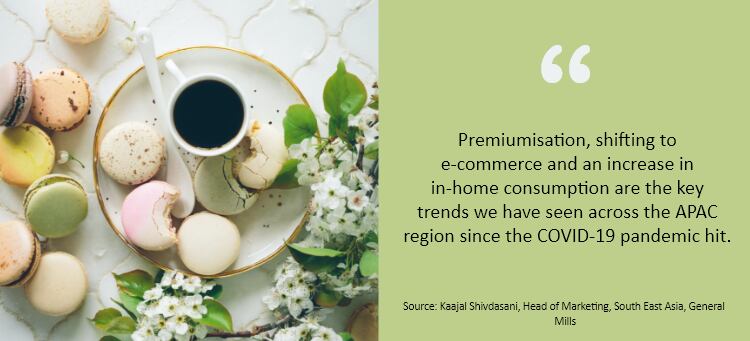
“Breakfast [is very important to use too] as we know it is an occasion that is very important and yet stressful - Our pancakes & waffle product and format innovations are targeted at solving this tension by providing solutions that cater to the morning convenience, taste and nutrition needs.”
Asia bakery heavyweight Julie’s has also identified continuous flavour innovation as an important driver to attract and retain consumers in the region.
“Innovation [in bakery products] is not always about coming up with something new that no one has ever seen before, but also could be making small little dents or improvements to existing products, learning from existing strengths to bring new experiences to consumers,” Julie’s Director Tzy Horng Sai told us.
“I believe modern human beings are both adventurous and conservative – [consumers will only feel safe being adventurous] if they have some go-to flavours to fall back on, which is why we make sure to take care of the basic flavours for our products whilst [experimenting] with more esoteric flavours.”
Packaging innovation was also highlighted as an area requiring much focus as the needs in this area are rapidly evolving, and firms need to react quickly to keep up.
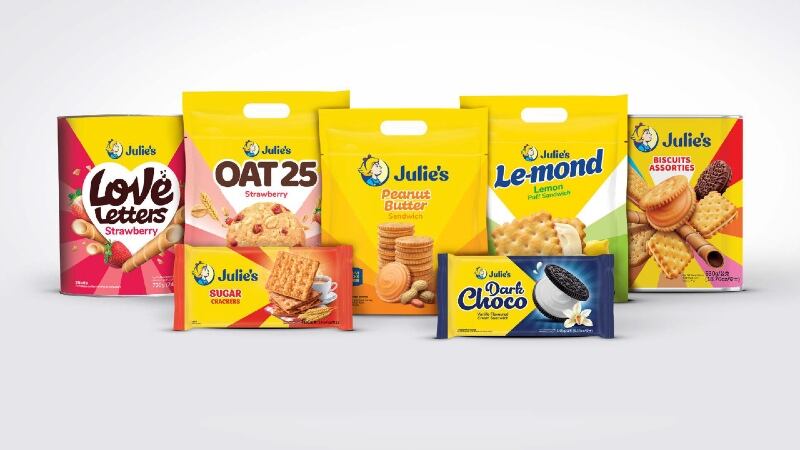
“For packaging innovation, we need to think of the balance between consumers looking for on-the-go convenient options [in the long-run] and the current situation where, especially in Malaysia, larger packs are becoming more popular as consumers want to minimise running to stores during COVID-19, and that [is another form of convenient packaging],” he said.
“Here, we also need to think of the sustainability aspect for us in terms of manufacturing and down the supply chain, as well as how this impacts our plans as Julie’s is very interested in becoming a clean and green company as well.”
Watch the video below for more of Sai’s insights.
Healthier options: Gluten-free and less carbohydrates
The health and wellness trend has penetrated basically every food and beverage category possible, and bakery is no different with many consumers looking for healthier options particularly in the form of products that are gluten-free or containing less carbohydrates.
According to Malaysian bakery firm Fresco Grano which specialises in gluten-free and organic baked goods including breads, cookies, cakes and granola, the health and wellness trend in APAC has come into its own over the past few years.
“The health and wellness trend has really gained its momentum since [at least] five years ago when Fresco Grano first entered the business,” Fresco Grano Founder Ryea Sankaran told us.
“In the first two to three years the shift was focused more on consumer preference to cut out ingredients that were unnatural, such as preservatives and colourings and such and also choosing non-GMO products where ever possible – [the focus was on] companies that could deliver a product using ‘real’ ingredients and working on small batch rather than mass produce.
“Today, it seems that convenience as well as buying something healthy that will last for stay/work from home families, for weeks at a go, has become increasingly popular.”
Along these lines, the firm has also noticed a significant rise in the demand for their gluten-free products.
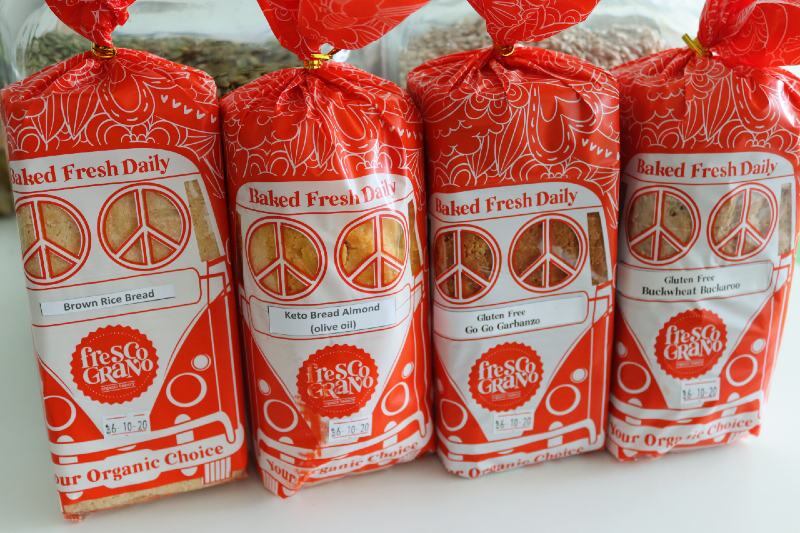
“[Consumers] are becoming aware that gluten intolerance and allergies are the reason behind some [of the] health issues that they face [which is driving this demand. Medical testing pertaining to this has become more available so they are now able to pinpoint the severity of their condition and what needs to be done to remedy it,” she added.
“Apart from this, with the rise of awareness amongst many consumers to cut down on carbs and to replace it with healthy proteins as part of a good diet, we have also [noticed that many of our consumers are] choosing to purchase a mix of both gluten and non-gluten products.”
The carbohydrate-reduction trend is also apparent in Australia, according to Australian firm Slim Secrets, which makes a variety of healthier snacks including blondies and brownies within the bakery category.
“Consumers are becoming more conscious about what they eat and portion sizes. But with COVID-19, we are spending more time at home and less time being active, so people have been eating a lot more and many have put on additional weight during this time,” said Slim Secrets International Sales Director Jamie Thurin.
“There is a trend amongst consumers looking for healthier, functional (with protein and fibre), keto, naturally sweetened, low sugar, convenient, with variety in flavour, all while making sure the product is still indulgent and affordable.”
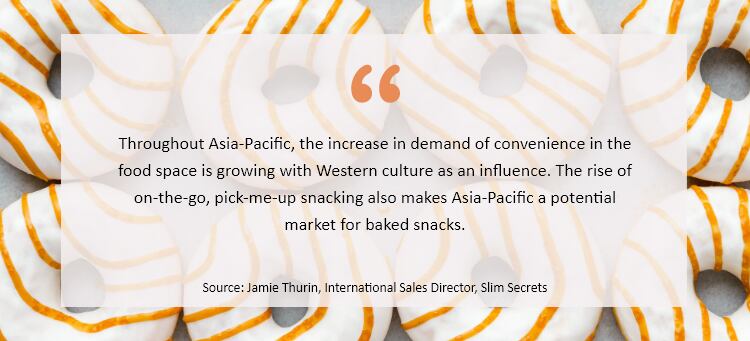
Slim Secrets has taken the healthier options trend a step further by developing a blondie and brownie with added milk protein concentrate and whey protein isolate to boost protein levels, and added collagen peptide powder said to support healthy hair skin and nails.
According to a software by FatSecret which provides nutritional information of common foods, blondies (100g portion) contain about 54g of carbohydrates of which 33g is sugar and 5g of protein.
For the same amount, Slim Secrets’ blondies contain 6.2g of carbohydrate of which 3.8g is sugar, and 25g of protein.
Slim Secrets and FatSecret are not affiliated.
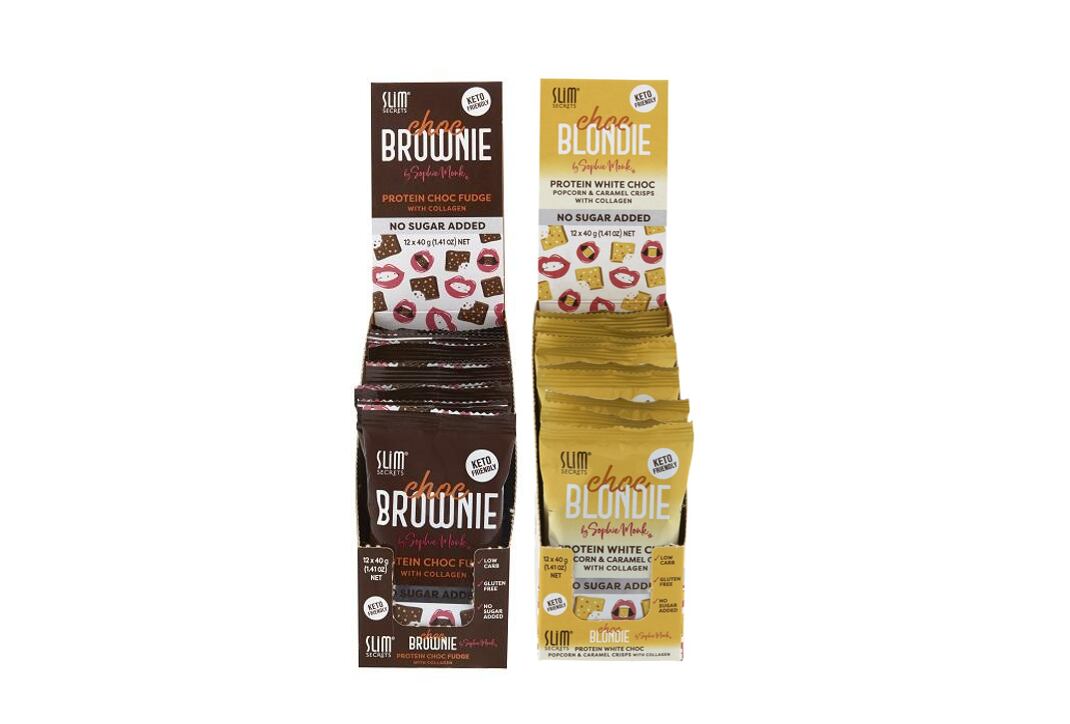
Indian firm Lo! Foods also sells a number of low-carb, keto-friendly bakery products with a focus on using seed or nut flour as opposed to traditional grains and millets to lower carbohydrate content.
“We hope to reduce the incidence of obesity, diabetes and cardiac risks by limiting carbohydrates, and offering health benefits, particularly weight loss and reducing blood sugar levels, blood pressure, as well as triglycerides,” Lo! Foods Founder Sudarshan Gangrade told FoodNavigator-Asia.
“[For the category as a whole], if we were to look at retail and premium retail I believe that in the baked goods category, sugar-free [lower-carbohydrate] alternatives have started to come in a big way. – even [big-name major] baked goods companies [now] have no-sugar, no-refined wheat flour products.
“It is clearly the consumer’s intent to have a healthier option compared to what they already have. They want to still have the cookies and snacks that they are used to but in a healthier form.”
Exploring other ways of looking at healthier options
For Japanese snacks giant Ezaki Glico, which makes the world-renowned Pocky biscuit, health and wellness is also a big trend for the firm, but its approach has been to change part of the carbohydrate sources used instead of going low-carb.
For instance, the firm launched its Pocky Wholesome product in Thailand last year where the much-loved stick biscuit is made from wholewheat and oats as compared to the conventional refined wheat flour, its answer to the rising demand for healthier options.
“Consumers are becoming more health conscious since the pandemic, we are focusing on introducing more health-oriented products,” Ezaki Glico Global Brand Manager Morihide Yoneda told us.
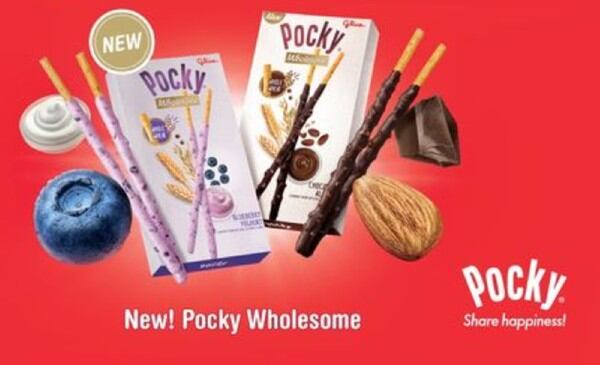
“[Due to the popularity of Pocky Wholesome], we will be introducing this to more countries this year starting with Singapore and the Philippines.”
Pocky Wholesome currently comes in blueberry yogurt and chocolate almond flavours.
Similar to Julie’s, Pocky is also examining its packaging sizes and formats to meet current consumer demands post-COVID-19.
“COVID-19 has changed the lifestyles of consumers. As people spend more time at home, it has increased the demand for larger, family sized packaging and confectionery products,” said Yoneda.
“[Pocky now has some products] that come in family sizes (nine servings) such as our Pocky Chocolate and Pocky Strawberry.”
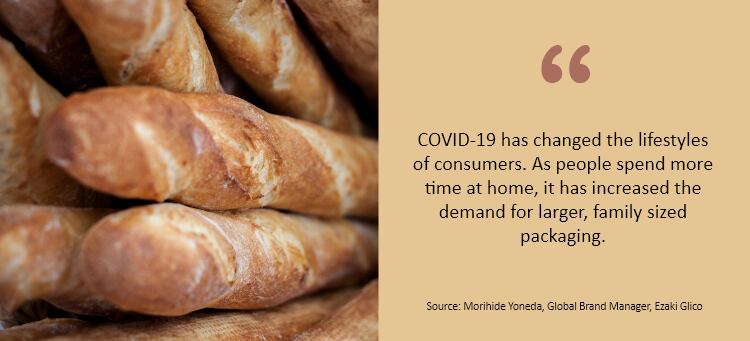
As for Julie’s take on the health and wellness trend, Sai stressed that this needs to go beyond just providing healthier product options, but also extends into caring for consumers’ mental and emotional health.
“Julie’s just underwent a huge rebranding and one of the things we wanted to portray with the new vibrant colours and the mascot is a very positive outlook – we want to deliver an experience good for consumers’ psychological and mental health,” said Sai.
“I think there is a lot of truth in how eating delicious foods that can make consumers happy can provide a positive outlook, and what we are definitely working towards developing a balance of is healthy in the traditional sense of what health foods are, [yet are still] tasty so consumers will latch on to these.”
More pandemic-related trends
COVID-19 has in general resulted in a hit to many industries due to a general economic downturn, but has also brought out some other interesting trends in the region.
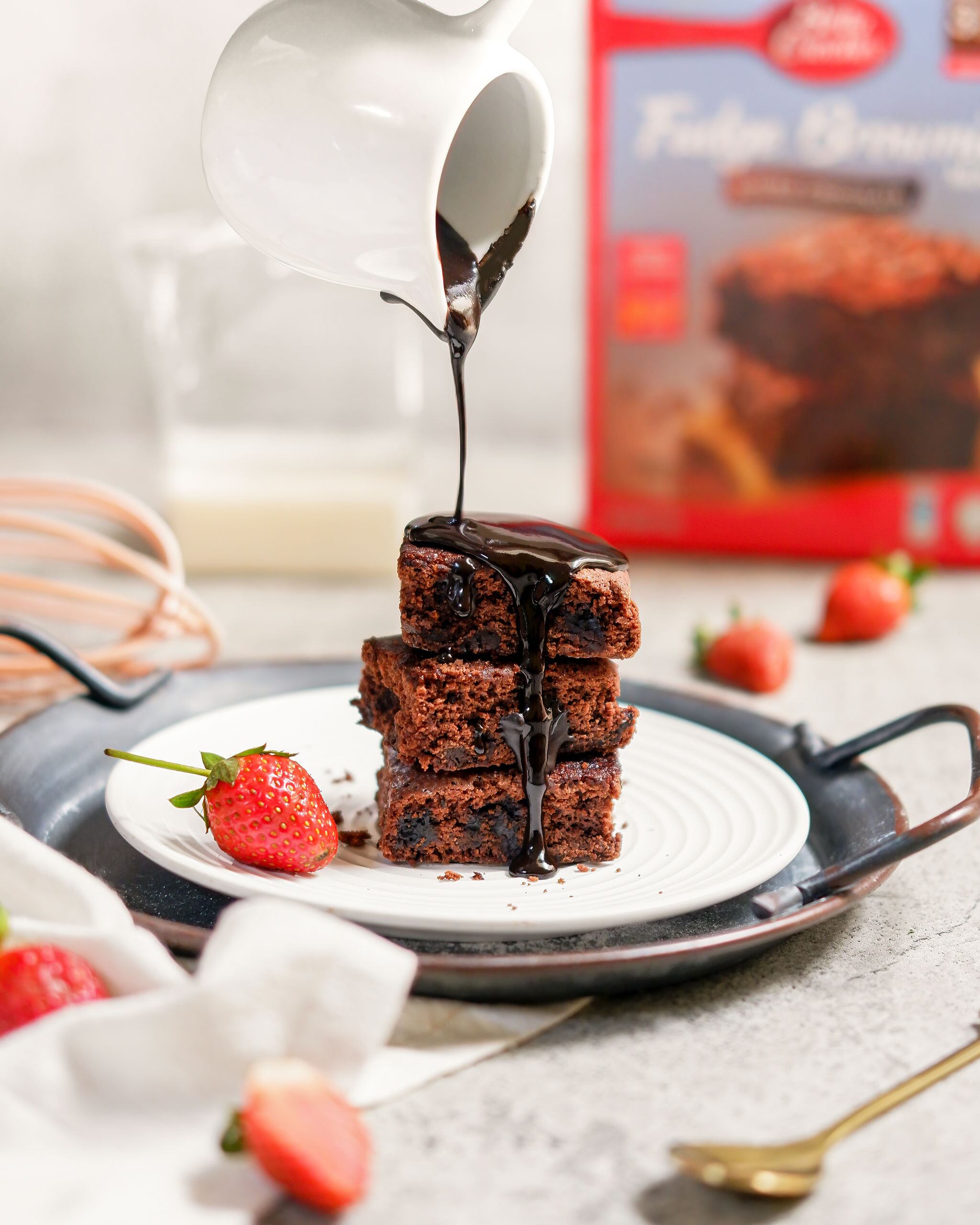
“[The pandemic has caused] various operational challenges [for sure, but] in the past year or so, we have also noticed a surge of support for local and small/medium sized bakeries such as ours,” said Sankaran.
“This seems to have stemmed from the current economic situation and [is] good for the baking industry as it has pushed [firms] to keep being innovative and always think of putting new spins on products.”
Betty Crocker on the other hand has noticed an increased demand in quality from consumers as a result of the pandemic.
“The current pandemic has had a significant impact on how consumers across the region consider, buy and prepare their food [and we have noticed] premiumization to be one of the main new trends in APAC [as a result of this],” said Shivdasani.
“With limited spend on travel and other discretionary items, we have seen consumers pay greater attention to the quality of the food they choose to eat and a shift in consumer preference in favour of premium brands.
“E-commerce is of course the other one, where consumers across many markets, not just APAC, are opting for the convenience of shopping for food online.”


